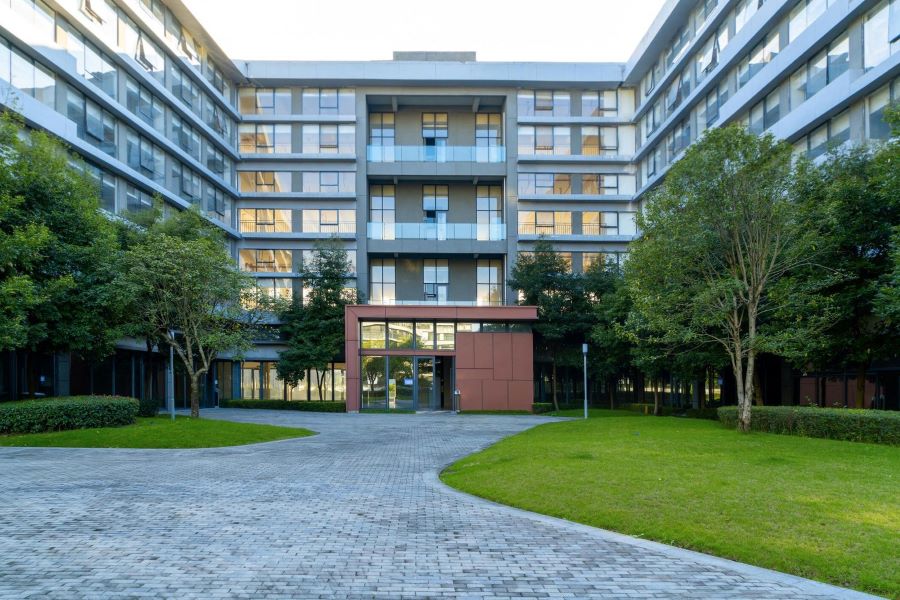
Healing Greens: Eco-Friendly Landscaping for Hospitals
In the bustling world of healthcare, where every detail matters, the significance of the environment, especially hospital landscaping, cannot be overstated. Hospitals are spaces where healing and well-being intersect, and the surrounding landscape plays a crucial role in this delicate balance.
In recent years, there has been a growing emphasis on eco-friendly hospital landscaping, recognizing the profound impact it has on patients, staff, and the community at large.
This article delves into the concept of healing greens, exploring how eco-friendly landscaping practices can transform hospital grounds into therapeutic sanctuaries.
The Healing Power of Nature
The healing power of nature transcends mere aesthetics, emerging as a cornerstone in healthcare design. Hospitals embrace the healing potential of green spaces, using them to relieve stress, promote recovery, and enhance well-being for patients and caregivers. This symbiotic relationship between nature and healing is reshaping hospital landscapes and redefining the patient experience.
Nature’s Therapeutic Touch
Nature is known for its healing properties, with hospital landscaping offering calming sights, sounds, and scents. Exposure to nature can reduce stress, lower blood pressure, and accelerate patient recovery. In hospitals, where stress levels are high, eco-friendly landscaping harnesses the therapeutic power of nature to create a soothing environment.

Eco-Friendly Landscaping: Principles and Practices
In the realm of healthcare, where every detail is geared towards healing and well-being. Eco-friendly landscaping principles and practices play a pivotal role in shaping the environment of hospital landscaping services. Rooted in principles of environmental stewardship, these practices not only enhance the aesthetic appeal of hospital grounds but also contribute to the overall health of patients, staff, and the planet. Let’s explore how these eco-conscious approaches are transforming hospital landscapes into sustainable havens of healing.
Sustainable Solutions for Hospital Grounds
Eco-friendly landscaping goes beyond mere aesthetics; it embodies a commitment to sustainability and environmental stewardship. Here are some key principles and practices that guide eco-friendly landscaping in hospitals:
- Native Plants: Selecting native plant species not only enhances biodiversity but also reduces water consumption and maintenance efforts. Native plants are well-adapted to the local climate and soil conditions also requiring minimal inputs to thrive.
- Water Conservation: Hospitals consume substantial amounts of water, making water conservation a top priority. Eco-friendly landscaping techniques like drip irrigation, rainwater harvesting, and drought-tolerant plants minimize water waste and improve efficiency.
- Pollinator-Friendly Gardens: Creating pollinator-friendly gardens not only beautifies hospital grounds but also supports declining pollinator populations. Planting flowers that attract bees, butterflies, and other pollinators boosts ecosystem health and creates a vibrant landscape.
- Chemical-Free Maintenance: Adopting organic and chemical-free maintenance practices minimizes exposure to harmful substances for patients, staff, and the environment. Integrated pest management, composting, and natural fertilization methods are preferred alternatives that promote soil health and biodiversity.
- Green Infrastructure: Incorporating green infrastructure elements such as green roofs, permeable pavement, and bioswales helps manage storm water runoff, mitigate urban heat island effects, and improve air quality. These features enhance the sustainability and resilience of hospital campuses while providing valuable ecological benefits.

Benefits of Healing Greens
Amidst the sterile corridors and bustling wards of hospitals, healing greens emerge as vital sanctuaries of tranquility and rejuvenation. Beyond mere aesthetics, these verdant spaces offer a myriad of benefits, fostering healing, resilience, and well-being for patients, staff, and the broader community. Let’s delve into the profound advantages that healing greens bring to the forefront of healthcare landscapes.
Cultivating Wellness through Eco-Friendly Landscaping
The integration of healing greens into hospital landscapes offers a multitude of benefits for patients, staff, and the surrounding community:
- Enhanced Patient Experience: Well-designed outdoor spaces promote relaxation, stress reduction, and positive distractions for patients, contributing to improved outcomes and satisfaction levels. Accessing nature shortens hospital stays, reduces pain perception, and improves overall well-being.
- Support for Healing and Recovery: Nature has a profound impact on the healing process, providing a supportive environment for physical, emotional, and spiritual recovery. Green spaces offer opportunities for restorative activities such as walking, gardening, and meditation, which can complement medical treatments and therapies.
- Employee Well-Being and Productivity: Hospital staff experience significant stress and burnout, making supportive work environments essential. Green spaces during breaks relieve stress, boost morale, and improve job satisfaction, leading to higher productivity and retention rates.
- Community Engagement and Education: Hospital landscapes offer educational opportunities for patients, visitors, and the community. Interpretive signage, tours, and programs promote awareness of conservation, healthy living, and the link between nature and health, encouraging community engagement and stewardship.

Additional Benefits of Healing Greens
In addition to the direct benefits for patients, staff, and the community, healing greens offer a range of additional advantages that contribute to the overall sustainability and resilience of hospital environments:
- Climate Resilience: Green spaces help combat climate change by reducing heat stress, improving air quality, and providing wildlife habitats. Trees, shrubs, and green infrastructure cool the area, decrease energy use, and absorb carbon dioxide from the atmosphere, thereby mitigating the urban heat island effect and combating climate change.
- Social Equity and Inclusion: Access to green spaces promotes social equity, offering all community members, regardless of background, the chance to enjoy nature’s benefits. Hospitals in underserved areas can anchor green projects, creating parks and gardens that support health, wellness, and social cohesion.
- Therapeutic Design Principles: Biophilic design principles create healing environments by engaging the senses and evoking positive emotions. Natural light, views of nature, and outdoor access foster a connection with the natural world, reducing stress and enhancing patient comfort and satisfaction.
- Economic Value: Investing in healing greens offers economic benefits such as reduced healthcare costs, and improved community well-being. Green spaces attract patients, visitors, and staff, boosting hospital reputation and neighborhood vitality.
Conclusion
Healing greens represent a holistic approach to healthcare design, integrating nature into the healing process and promoting environmental sustainability.
By prioritizing eco-friendly landscaping practices, hospitals can create therapeutic environments that support healing, enhance well-being, and foster connections with nature.
As we continue to navigate the complexities of modern healthcare, let us remember the profound impact that a touch of green can have on our bodies, minds, and spirits.
